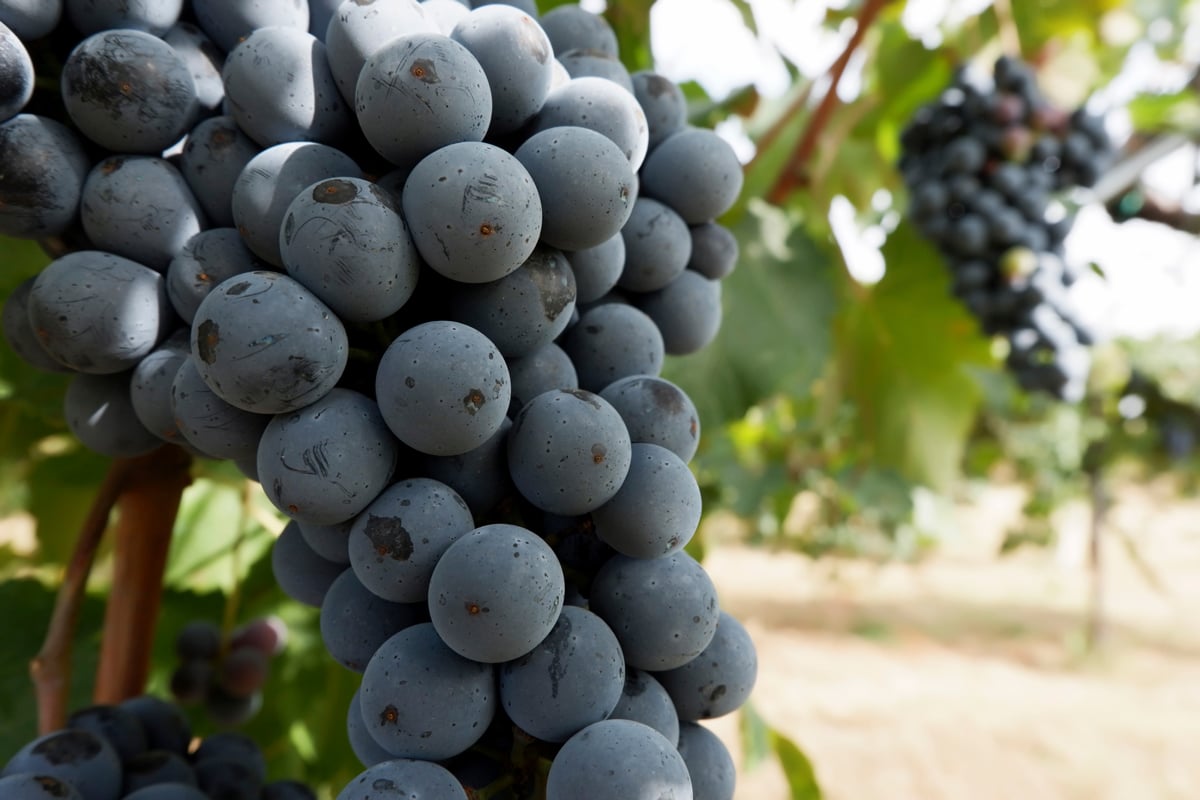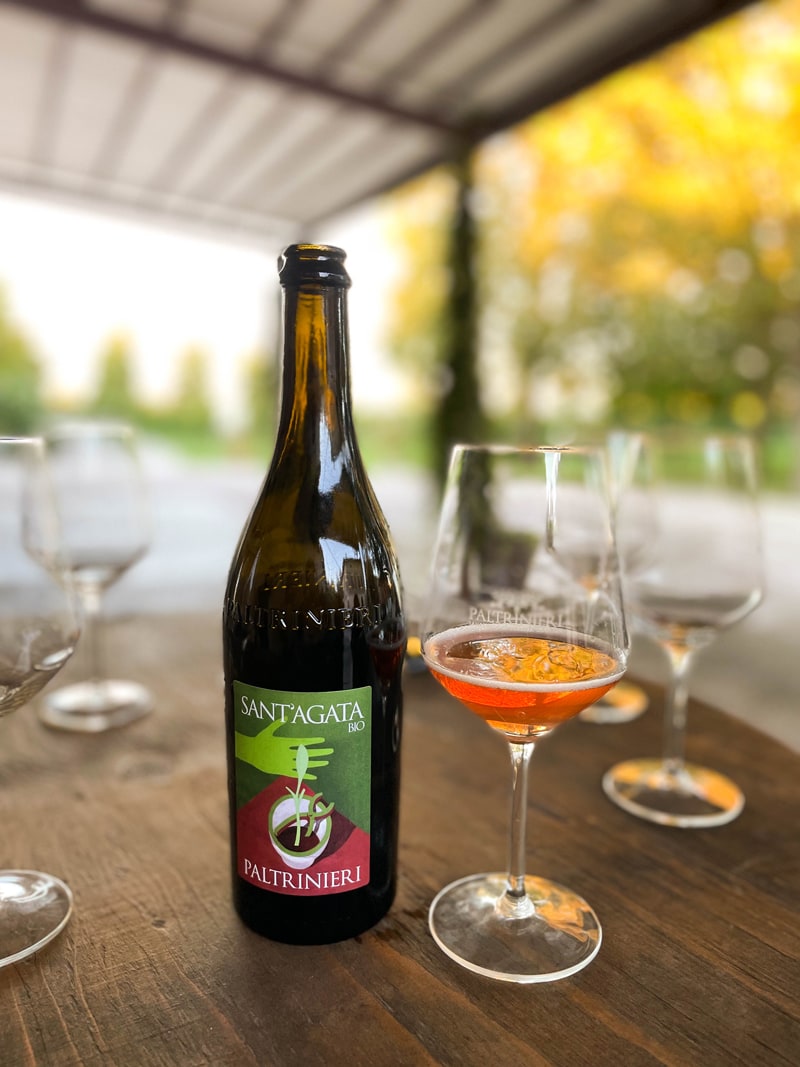Lambrusco is a red sparkling wine that is hugely popular for its drink-ability and incredible variety. In 2020, more than 160 million bottles were produced and shipped all over the world for eager consumers to enjoy. Keep reading to find out where it is produced, how it gets its fizz and what foods you can pair with this wine that comes in so many variations from sweet to dry.

Lambrusco is an Italian wine made in Northern Italy from a blend of red grape varieties with the same name (although there are 12 different types). It is usually a sparkling or frizzante style wine that is drunk young. Although it is usually thought of as a sparkling sweet wine it is becoming much more common to be made in semi dry or dry styles.
Lambrusco is not a single grape variety but actually a family of 12 red grape varieties that are native to the Emilia Romagna region of Italy and have been grown there for centuries, possibly millennium. In fact, archeologists have found evidence of grapes grown in this area of Italy dating back to Etruscan times, even before Romans.
The Lambrusco grape varieties can be used alone to create a one-variety wine (which is fairly rare) or combined with each other and other varieties.
In the fertile lands all across the Emilia Romagna region, the cultivation of many agricultural products, including red grapes for wine, has long been an important part of the local economy. Because Lambrusco wines are young, sparkling wines, in the past they were sometimes considered a cheap blend wine for every day consumption. However, many producers have begun focusing on quality rather than quantity and are today making high-quality Lambrusco.
There are several different Lambrusco DOC ( Denominazione di origine controllata or controlled designation of origin) areas to help ensure top quality red wine is being produced. Each DOC has a specific area where the grapes that go into it must be produced as well as a loose “recipe” or rules that the winemaker must follow regarding percentage of different types of grapes, additives, aging time, carbonation method and much more.

If you are looking for a very flexible drink to serve during dinner or a party, a Lambrusco variety from one of the Lambrusco wine regions is sure to be a hit. The amazing thing is that you can select from dry or semi dry styles as well as semi sweet or sweet styles and also between still, sparkling or spumante.
Some of the top wines come from Lambrusco di Sorbara, Lambrusco Grasparossa di Castelvetro and Lambrusco Salamino wine regions. Grape varieties to look for on the label include Lambrusco salamino, Lambrusco maestri, Lambrusco sorbara and Lambrusco grasparossa.

Lightly sparkling wines get their fizz from the Martinotti or Charmat method for turning wine into sparkling red wine. The wine is put into a large pressurized tank where yeast and sugar is added before it undergoes a second fermentation. The carbonation is trapped within the tank and forced into the wine. The wine is then bottled and a special cork is added to preserve the carbonation.
The frizzante or sparkling red wine produced has less carbonation than wine produced using other carbonation methods in the bottle.
For spumante, the metodo classico or Classic/Champanoise method is used to create a much stronger carbonation. The second fermentation happens after the wine has already been bottled, thanks to the addition of yeast and sugar beforehand. This secondary fermentation results in an intense carbonation that is trapped within the bottle, which is why special reinforced bottles and corks are required.
This method takes a much longer time to occur, and is labor intense as the bottles must be rotated every day. The wine then undergoes a special process to remove yeast sediment before the final corking.

Because there are so many different styles and types, it can be paired with virtually all foods and a myriad of flavors. For example, it goes well with savory flavors such as prosciutto di Parma or balsamic vinegar drizzled over Parmigiano Reggiano or another hard cheeses. This easy going drink also works well with pizza or the local fried specialty from Modena, gnocco fritto or tigelle. There are even sweet wines that go well with fruit or dessert.
This fizzy, acidic wine offers the perfect pairing to the typical Italian flavors such as pizza and prosciutto while at the same time pairing well with international flavors from sushi to hamburgers and even being suitable to pair with fruit such as strawberries, fruit salad or a raspberry dessert.